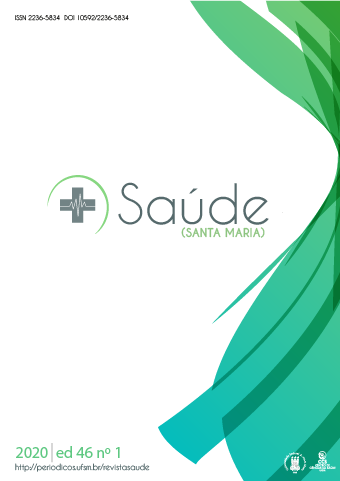Emerging strategies for ESKAPE treatment
DOI:
https://doi.org/10.5902/2236583443061Keywords:
Bacteria, Microbiology, Therapy.Abstract
The persistent use of antibiotics, self-medication and exposure to hospital infections has led to an increase in multidrug-resistant microorganisms. With this emergence of bacterial multiresistance, six pathogens play an essential role. The term ESKAPE deals with six microorganisms with high multiresistance and virulence: Enterococcus faecium, Staphylococcus aureus, Klebsiella pneumoniae, Acinetobacter baumannii, Pseudomonas aeruginosa and Enterobacter spp. The World Health Organization (WHO) recently released a list of priority pathogens for research and development of new antibacterial agents. All ESKAPE pathogens are on this list. Thus, listing a big question: the emerging importance of new treatment strategies for infections caused by these microorganisms.Downloads
References
Michalik M, Podbielska-Kubera A, Samet A, et al. Multidrug-resistant strains of coagulase-negative staphylococci isolated from patients with chronic sinusitis – MDR, XDR, PDR strains. Otolaryngol Pol. 2019;74(2):36-41. https://doi.org/10.5604/01.3001.0013.5258.
Mulani MS, Kamble EE, Kumkar SN, et al. Emerging Strategies to Combat ESKAPE Pathogens in the Era of Antimicrobial Resistance: A Review. Front Microbiol. 2019;10: 539.https://doi.org/10.3389/fmicb.2019.00539.
Rice LB. Federal funding for the study of antimicrobial resistance in nosocomial pathogens: no ESKAPE. J Infect Dis. 2008;197(8):1079–81. https://doi.org/10.1086/533452.
Sirijan S, Indrawattana N. Mechanisms of Antimicrobial Resistance in ESKAPE Pathogens. BioMed Res Int. 2016;1-8. https://doi.org/10.1155/2016/2475067.
Tiwari V. Post-translational modification of ESKAPE pathogens as a potential target in drug discovery. Drug Discov Today. 2019;24(3):814-22. https://doi.org/10.1016/j.drudis.2018.12.005.
Tiwari V, Meena K, Tiwari M. Differential anti-microbial secondary metabolites in different ESKAPE pathogens explain their adaptation in the hospital setup. Infect Genet Evol. 2018; 66: 57-65. https://doi.org/10.1016/j.meegid.2018.09.010.
Mijakovic I, Grangeasse C, Stülke J. Regulatory potential of post-translational modifications in bacteria. Front Microbiol.2015;6:500. https://doi.org/10.3389/fmicb.2015.00500.
Roca I, Akova M, Baquero F, et al. The global threat of antimicrobial resistance: science for intervention. New Microbes New Infect.2015;16:22-29. https://doi.org/10.1016/j.nmni.2015.02.007.
Vazquez-grande G, Kumar A. Optimizing antimicrobial therapy ofsepsis and septic shock : focus on antibiotic combination therapy. Semin RespirCrit Care Med. 2015;1:154–166. https://doi.org/10.1055/s-0034-1398742.
AhmedA, AzimA, GurjarM, et al. Current conceptsin combination antibiotic therapy for critically ill patients. Indian J Crit CareMed. 2014;18:310–314. https://doi.org/10.4103/0972-5229.132495.
Latz S, Wahida A, Arif A, et al. Preliminary survey of local bacteriophages with lytic activity against multi-drug resistant bacteria. J Basic Microbiol. 2016;56:1117-1123. https://doi.org/10.1002/jobm.201600108.
Domingo-Calap P, Delgado-MartínezJ. Bacteriophages:protagonists of a post-antibiotic era. Antibiotics. 2018;7:66. https://doi.org/10.3390/antibiotics7030066.
BerglundNA, Piggot TJ, JefferiesD, et al. Interaction of the antimicrobial peptide polymyxin B1 withboth membranes of E. coli: a molecular dynamics study. PLoSComputBiol.11:e1004180.https://doi.org/10.1371/journal.pcbi.1004180.
YangMY, Chang KC, ChenLY, et al. Blue light irradiation triggers the antimicrobial potential ofZnO nanoparticles on drug-resistant Acinetobacter baumannii. J PhotochemPhotobiol B.2018;180:235–242. https://doi.org/10.1016/j.jphotobiol.2018.02.003.
QayyumS, OvesM, KhanAU. Obliteration of bacterial growthand biofilm through ROS generation by facilely synthesized green silvernanoparticles. PLoS ONE. 2017;12:0181363. https://doi.org/10.1371/journal.pone.0181363.






